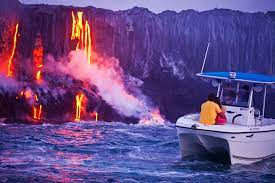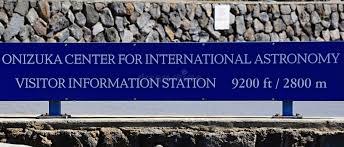Discover Tranquility at Hotel Hana Maui
Hotel Hana Maui: A Hidden Gem in Hawaii
Nestled along the scenic Hana Highway on the eastern coast of Maui, Hotel Hana Maui is a tranquil oasis that offers a truly unique Hawaiian experience. Surrounded by lush tropical gardens and overlooking the sparkling Pacific Ocean, this secluded retreat is the perfect destination for those seeking relaxation and rejuvenation.
Originally established in the 1940s, Hotel Hana Maui has a rich history that adds to its charm and character. The property has been meticulously maintained and updated over the years, while still retaining its old-world charm and authentic Hawaiian hospitality.
Guests at Hotel Hana Maui can choose from a variety of accommodations, ranging from luxurious suites to private cottages nestled among the gardens. Each room is elegantly appointed with traditional Hawaiian decor and modern amenities, ensuring a comfortable stay for every guest.
One of the highlights of staying at Hotel Hana Maui is the array of activities and experiences available to guests. From guided hikes through lush rainforests to traditional Hawaiian cultural classes, there is something for everyone to enjoy. Guests can also indulge in spa treatments inspired by ancient Hawaiian healing practices or simply relax by the infinity pool overlooking the ocean.
The dining options at Hotel Hana Maui are equally impressive, with farm-to-table cuisine highlighting fresh local ingredients and flavors. Whether dining at the elegant restaurant overlooking the gardens or enjoying a casual meal by the pool, guests are sure to savor every bite.
For those looking to explore beyond the hotel grounds, Hotel Hana Maui offers easy access to some of Maui’s most breathtaking natural attractions, including waterfalls, black sand beaches, and volcanic landscapes. The friendly staff is always on hand to provide recommendations and assistance in planning excursions.
In conclusion, Hotel Hana Maui is a hidden gem in Hawaii that offers an unparalleled blend of luxury, tranquility, and authentic Hawaiian hospitality. Whether seeking a romantic getaway or a peaceful retreat from everyday life, this enchanting resort has something for everyone.
Discover Serenity and Authentic Hawaiian Luxury at Hotel Hana Maui
- Tranquil oasis nestled along the scenic Hana Highway in Maui
- Rich history and authentic Hawaiian hospitality
- Luxurious accommodations with traditional Hawaiian decor
- Variety of activities and experiences available to guests
- Farm-to-table cuisine highlighting fresh local ingredients
- Easy access to breathtaking natural attractions on Maui
Considerations for Staying at Hotel Hana Maui: Dining, Location, and Amenities
- Limited dining options on-site
- Remote location may require a long drive along the Hana Highway
- Limited nightlife or entertainment options
- Some accommodations may lack modern amenities
- Cellular reception can be spotty in certain areas of the property
- Limited shopping opportunities in the immediate vicinity
Tranquil oasis nestled along the scenic Hana Highway in Maui
Hotel Hana Maui is a tranquil oasis nestled along the scenic Hana Highway in Maui, offering guests a serene escape surrounded by breathtaking natural beauty. The peaceful setting of the hotel, set against the backdrop of lush tropical gardens and overlooking the picturesque ocean, provides a perfect retreat for those seeking relaxation and rejuvenation. With its secluded location and soothing ambiance, Hotel Hana Maui allows guests to unwind and immerse themselves in the tranquility of Hawaii’s stunning landscapes.
Rich history and authentic Hawaiian hospitality
Hotel Hana Maui’s rich history and commitment to authentic Hawaiian hospitality set it apart as a truly special destination. With roots dating back to the 1940s, the hotel embodies a sense of tradition and cultural significance that adds depth to the guest experience. From the warm greetings upon arrival to the attention to detail in every aspect of service, guests are enveloped in genuine Hawaiian hospitality that creates a welcoming and immersive atmosphere throughout their stay. This dedication to preserving and sharing the essence of Hawaiian culture ensures that visitors not only enjoy luxury accommodations but also leave with a deeper understanding and appreciation of the island’s heritage.
Luxurious accommodations with traditional Hawaiian decor
Hotel Hana Maui offers luxurious accommodations adorned with traditional Hawaiian decor, providing guests with an immersive and authentic island experience. Each room and suite is elegantly appointed with elements of Hawaiian culture, from handcrafted furniture to indigenous artwork, creating a serene and inviting atmosphere that reflects the rich heritage of the islands. The blend of modern amenities with traditional design elements ensures that guests enjoy both comfort and a sense of place during their stay at this enchanting retreat on the eastern coast of Maui.
Variety of activities and experiences available to guests
Hotel Hana Maui stands out for its diverse array of activities and experiences available to guests, ensuring that there is something for everyone to enjoy during their stay. From guided hikes through lush rainforests to traditional Hawaiian cultural classes, guests have the opportunity to immerse themselves in the beauty and traditions of Hawaii. Whether seeking adventure or relaxation, guests can indulge in spa treatments inspired by ancient Hawaiian healing practices or simply unwind by the infinity pool overlooking the ocean. The hotel’s commitment to providing a wide range of experiences adds depth and richness to each guest’s stay, making it a truly memorable and fulfilling destination.
Farm-to-table cuisine highlighting fresh local ingredients
Hotel Hana Maui’s commitment to farm-to-table cuisine, showcasing fresh local ingredients, is a standout feature that truly elevates the dining experience. By sourcing ingredients directly from local farms and producers, the hotel not only supports the community but also ensures that guests enjoy the freshest and most flavorful dishes possible. This culinary approach not only promotes sustainability but also allows guests to savor the authentic flavors of Hawaii while appreciating the connection between food, land, and culture.
Easy access to breathtaking natural attractions on Maui
Hotel Hana Maui offers guests the incredible advantage of easy access to some of Maui’s most breathtaking natural attractions. From cascading waterfalls and pristine black sand beaches to rugged volcanic landscapes, guests can immerse themselves in the awe-inspiring beauty of Maui’s natural wonders just a short distance from the hotel. Whether seeking adventure or tranquility, the convenient location of Hotel Hana Maui allows guests to explore and experience the diverse landscapes and ecosystems that make Maui such a captivating destination.
Limited dining options on-site
One drawback of Hotel Hana Maui is its limited dining options on-site. While the resort offers exquisite farm-to-table cuisine with fresh local ingredients, guests may find themselves wanting more variety in terms of dining experiences. With only a few restaurants available within the property, some guests may feel restricted in their dining choices during their stay. However, the resort’s close proximity to local eateries and food trucks provides alternative dining options for those looking to explore different culinary delights outside of the hotel grounds.
Remote location may require a long drive along the Hana Highway
One potential drawback of Hotel Hana Maui is its remote location, which may require guests to endure a long drive along the winding Hana Highway to reach the property. While the scenic journey offers breathtaking views of Maui’s lush landscapes and coastal beauty, some travelers may find the drive challenging due to the narrow roads and numerous hairpin turns. However, for those seeking a secluded retreat away from the hustle and bustle of more touristy areas, the journey to Hotel Hana Maui can be seen as part of the adventure and a unique way to disconnect from everyday distractions.
Limited nightlife or entertainment options
One drawback of Hotel Hana Maui is its limited nightlife and entertainment options. Due to its secluded location along the Hana Highway, the resort does not offer a bustling nightlife scene or a wide variety of evening activities. Guests looking for vibrant nightlife or extensive entertainment options may find themselves with fewer choices during their stay at Hotel Hana Maui. However, the resort’s focus on tranquility and relaxation makes it an ideal retreat for those seeking a peaceful escape from the hustle and bustle of city life.
Some accommodations may lack modern amenities
While Hotel Hana Maui offers a charming and authentic Hawaiian experience, it’s important to note that some accommodations may lack modern amenities. Due to the property’s commitment to preserving its historic charm, certain rooms or cottages may not have all the contemporary conveniences that some guests are accustomed to. However, the trade-off for this lack of modernity is often the opportunity to immerse oneself in a more traditional and tranquil setting, allowing guests to disconnect from the hustle and bustle of everyday life and truly unwind in the serene beauty of Maui’s eastern coast.
Cellular reception can be spotty in certain areas of the property
One drawback of staying at Hotel Hana Maui is that cellular reception can be spotty in certain areas of the property. While the lush tropical gardens and secluded location create a serene atmosphere, it may also result in limited connectivity for guests who rely on their phones for communication or internet access. However, this minor inconvenience can be seen as an opportunity to truly disconnect and immerse oneself in the peaceful surroundings of this hidden gem in Hawaii.
Limited shopping opportunities in the immediate vicinity
While Hotel Hana Maui offers a serene and secluded retreat in the midst of nature, one potential drawback is the limited shopping opportunities in the immediate vicinity. Guests looking for a variety of shopping options may find themselves with fewer choices nearby. However, this can also be seen as an opportunity to embrace the tranquility of the surroundings and focus on relaxation and immersion in the natural beauty of Maui without the distractions of commercial activities. For those seeking specific items or souvenirs, the hotel may offer curated selections or recommendations for nearby shopping destinations to fulfill their needs.


